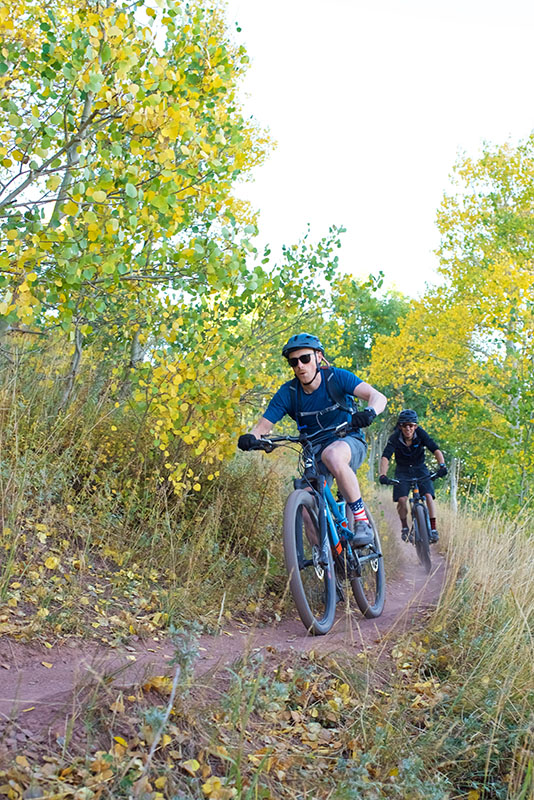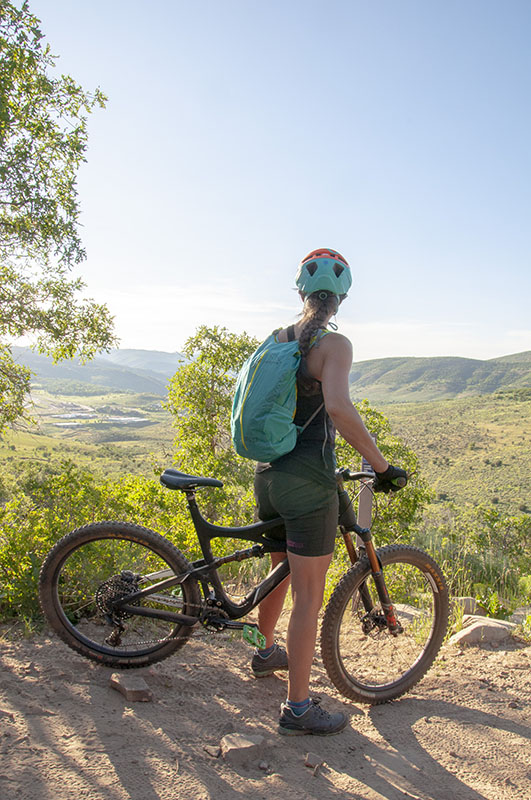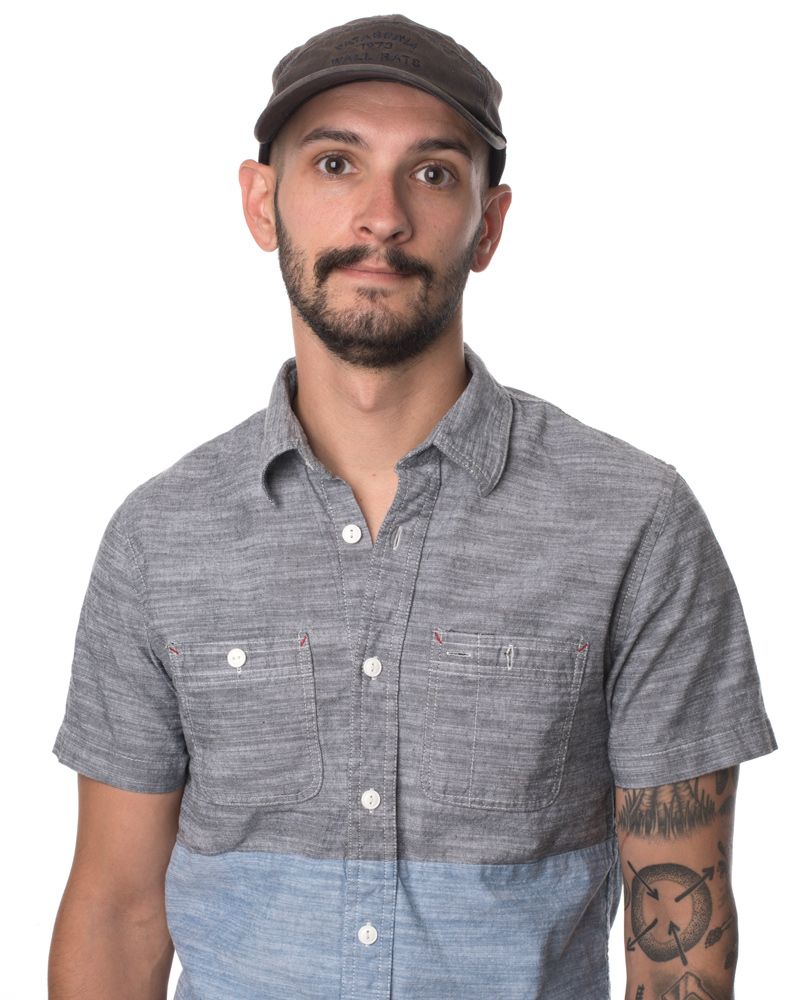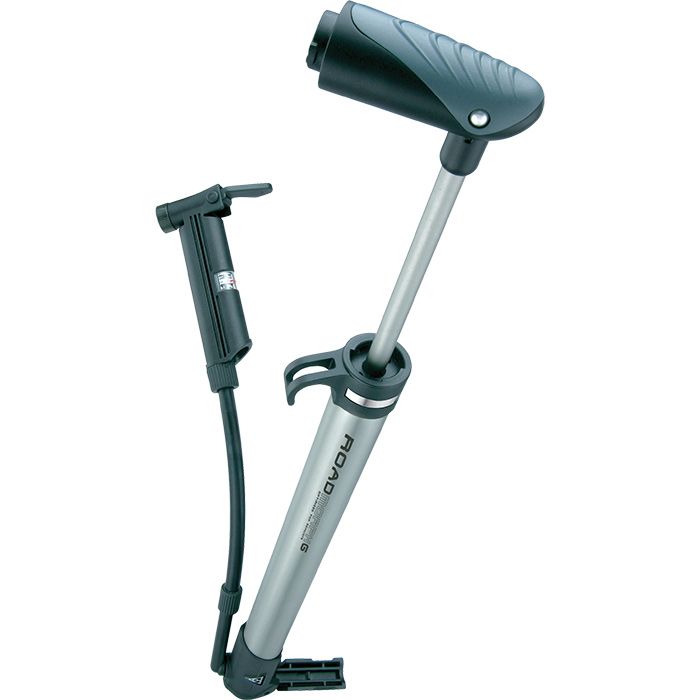What Should I Pack for Mountain Biking?
With social distancing recommendations in effect for the better part of 2020 it seems, more and more people have taken up mountain biking to get their fix of exercise and adrenaline. I've had a few friends recently embrace the hobby and ask for advice on what to purchase and/or what to bring along on a ride. I've been mountain biking for the better part of 15 years now, and while I'm no pro (my love for pizza and beer makes the hill climbs a struggle sometimes) I can say that I do feel confident in what I pack for a ride.
I'm well aware that fanny packs are all the rage in mountain biking right now (Call it a "hip pack" if you want. It's still a fanny pack to me.) but I still stick with an actual backpack for my rides. This isn't because I'm too cool to wear a fanny pack. It's because I want to bring a good amount of stuff along with me on my ride, and most importantly because I want to be able to stay hydrated by easily taking a swig from my reservoir tube mid-ride. Ever try to get to a water bottle that's stuffed down by your bottom bracket while pedaling? Or maneuver a hose from your waist up to your mouth and then back down to its clip without dropping it into your gears and wiping out? No thanks, I'll take the sweaty back over that any day because I'll be sweaty either way by the time I'm done riding. Plus, I don't mind the extra protection over my spine since I enjoy the use of my legs. Lots of people are riding with hip packs these days though, so to each their own.
I have had the same Camelback M.U.L.E. 100 oz for numerous years and it hasn't let me down yet. It's comfortable, stays put, ventilates decently enough, and can carry all the water and gear I need. I really don't even notice it while riding since it doesn't get in the way or impair my mobility. I tend to not do a great job of cleaning my reservoir, so after some funk developed in both the hose and the interior of the bladder that came with the pack I ended up switching it out for a Gregory 3D Hydro. It provides me with 3 liters of water, which gets me through a long day of riding the Crest or Flying Dog while drinking heavily. The fact that it holds its 3D shape makes the drying process way easier at the end of the day. Less effort to dry out my bladder means less of a chance that I'll have to replace it due to mold. I know some people that throw their bladder in the freezer when they aren't riding to keep it from getting moldy. This isn't a bad idea if you have the space for it to be in there all of the time.


So, what do you put in a riding pack with 12L of space in addition to the 3L of water? I rarely have it packed full unless I'm doing an all day ride, in which case I'll throw in a jacket, lunch, and some shin/knee/elbow pads if there are technical aspects of a trail that come later on. When the pack is stored in my gear room at home, I keep my gloves, sunglasses, and helmet inside so I don't end up forgetting them when I grab it and head out. I have a pretty basic pair of Fox gloves to reduce palm sweat on my grips and to minimize damage to my hands if I crash. As for sunglasses, I have a pair of Native Eldo that I only use for biking so that I don't scratch or break them in my day to day life. Their sunglasses are sized and shaped for different faces, and the Eldo fit my big head well while also providing a lot of coverage around my eyes to keep the sun, wind, bugs, and dirt out. It's nice being able to see still while bombing down narrow singletrack. As for a helmet, I dig the Bern FL-1 XC. It has good ventilation and fit adjustment and looks better than some other helmets in my opinion. I opted for the version with MIPS (Multi-Directional Impact Protection System) for extra piece of mind in case of a blow to the head during a crash.


Aside from those items I store in my pack, there are plenty of items I keep in there for bringing along on every ride.
Speaking of crashes, it's worth keeping a small first aid kit in your bag. I have an Adventure Medical Kit 2.0 in there in case myself or someone else needs it. Spills over the handlebars are not uncommon in mountain biking, and although it isn't going to be much help if there's a broken arm or collar bone, it is nice for smaller things. "Pedal bite" to the ankle/calf and ripped up forearms, elbows, or knees are pretty common, and it's best if you can clean them out and throw a bandage over them instead of having to ride out with your wound full of dirt and blood dripping on your clothes and bike.
I can't keep track of the number of times I've come across someone on the side of the trail with a broken chain and no chain tool to put it back together. I haven't snapped my chain in years (knock on wood) but it's way more common for newer riders. This is because they tend to shift at the wrong times and don't realize when they are cross-chaining, which puts more stress on the drivetrain and can lead to chain breaks. Trust me when I say that you don't want to be stranded with a broken chain while you're 10 miles out in the woods and don't have a chain breaker to fix it. Hopefully you can find a paperclip, MacGyver. A dedicated chain tool is nice to have around the house for working on your bike, but for rides I'd rather just have one on my multi tool. The Hexus X 21 function tool has a built in chain tool and is what I keep on me as of late. It is a good mix of the tools I might actually need on a ride without all of the excess ones that I would really only use for at-home repairs. On the trail I really just want the essentials to do things like adjust spun bars or brake levers after a crash, tweak a derailleur, raise or lower a seat that doesn't have a dropper post or quick release lever, tighten a bolt on a creaky crank arm, etc.


My bike came set up tubeless, and if yours isn't yet I recommend you do this because pinch flats are a bummer and buying and patching tubes all of the time is annoying and can become a thing of the past. That being said, I still bring along a tube just in case something goes wrong with my tire and I can't get the bead to seal after fixing it. It's my plan B that I hope not to have to use, but it can happen. One time, prior to my carrying a tube, a broken tree root slashed my tire's sidewall and I had to walk my bike for 3 miles to a road and then hitchhike back to town because there was no cell service. You don't want to do that. Because of instances like this, I also carry a tubeless repair kit of plugs, patches, and some Gorilla Tape. Depending on how stiff your tire is and how adept you are at pulling them on and off your wheel, it's probably worth keeping 2 or 3 tire levers in your bag as well. I keep three of the IceToolz ones in my bag since they snap together for storage and I don't want steel ones scratching my carbon wheels. I have a few tube patches thrown in there as well for when I inevitably come across someone on the trail with a flat and no way to fix it, or for when one of my friends that gives me crap about how much stuff I bring in my bag realizes that their fanny pack doesn't have any patches in it. Obviously, they owe me a beer and an apology after I save their butt. Lastly, as far as tire/tube stuff goes anyways, is a pump so that I can actually put air back in the tires when repairs are done, or in case there's a need for changing air pressure between descending and climbing. Even though it says "road" in the name, I bring the Road Morph G3 pump by Topeak. I love its clever design that acts like a Transformer and converts into a mini floor pump. I'm not a fan of how traditional hand pumps are so awkward and inefficient to operate. You risk messing up your valve with all the movement you get while trying to hold it onto the stem while forcing a ton of air in there. You also end up getting exhausted from doing all of the little strokes while having no idea what your pressure is actually at since there's often no gauge either. The Road Morph G3 is hardly any bigger or heavier than other hand pumps, so for me it's worth just keeping in my Camelback.


One thing I started to bring along on every ride, which I'm guessing most people usually don't, is a light. If you're out on a post-work ride, there's a good chance it will be getting dark before too much longer. If there's a mechanical issue, you make a wrong turn and end up further out than you intended, or someone gets injured, you might end up needing to ride back in the dark. While the light on your iPhone is surprisingly bright, I wouldn't recommend trying to tape it to your handlebars. Maybe it's because I was raised in the Scouts, but I'd rather come prepared for the worst-case scenario instead of just hoping for the best. Things can happen where you really wish you had packed a light, even if you weren't planning on being out close to dark. I bring along a Silva Cross Trail 6 headlamp since it can mount to my helmet or handlebars in addition to being worn on my head with a strap like a traditional headlamp. The length of the cable allows the external battery pack to stay in the brain of my bag if I'm wearing it head/helmet mounted or it can strap to my top tube if the light is mounted to my bars. I'm a big fan of the Cross Trail's versatility. If I'm actually PLANNING on going on a night ride I'll bring along my Niterider 4200 as well. That way I can have one light on my handlebars and one on my head.
Lastly, it's worth bringing a snack. I usually just throw a Clif bar in there, but energy gels and gummies are great for long and exhausting rides. Stopping to fuel up can be such a big help after a series of long hill climbs. If it's an especially long ride I'll bring a sandwich and banana as well, because being hangry while mountain biking is no fun.


Here's my pack list:


If you're a weight weenie you could get away with leaving out some of the items. People have different preferences and priorities depending on the type of riding they do, but I find this setup to work quite well for me and don't mind the extra weight since it doesn't add up to be very noticeable.
What would you add to the list? Drop a comment below to let us know.


By Adam Kittell-
Adam has worked in the outdoor industry as a merchandise specialist, buyer, and most recently in marketing. Prior to that he was a guide at multiple wilderness therapy companies. He has spent weeks at a time living out of a backpack starting at a young age and later living out of a Honda Element. Adam has guided extended trips backpacking, rock climbing, mountain biking, and canyoneering all over the United States. Some say he has an obsession with gear, and he does not disagree with them.






